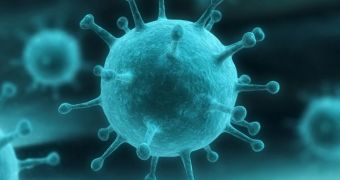A paper published in yesterday's issue of the journal Cell Host & Microbe documents the creation of a bug very much similar to the 1918 Spanish flu virus in the laboratory.
For those who are having trouble figuring out why this news is making headlines, it need be said that the Spanish flu is one of the worst disease outbreaks that have until now hit human society.
Thus, specialist Yoshihiro Kawaoka with the University of Wisconsin-Madison in the United States says that this pandemic killed about 40 million people worldwide between 1918 and 1920.
Hence, quite a lot of people were anything but pleased to hear that scientists had successfully pieced together a mutant version of the 1918 Spanish flu virus, regardless of how safe they claim their experimenting to have been.
Still, what makes this piece of news really disturbing is not the creation of a Spanish flu-like virus in laboratory conditions per se. On the contrary, what is worrying is the fact that, to create this bug, scientists used ingredients found in nature alone.
As detailed in the journal Cell Host & Microbe, evidence indicates that all the genetic material needed to birth a virus not all that different to the one behind the deadly 1918 influenza can be found in nature in circulating avian influenza viruses.
What this means is that, should it set its mind on in, Mother Nature should not have any trouble unleashing a new pandemic. “There are gene pools in nature that have the potential to cause a severe pandemic in the future,” says Yoshihiro Kawaoka.
The scientist goes on to explain that, when he and his fellow researchers decided to create the mutant Spanish flu virus, which differs from its forefather ever so slightly, they were merely looking to prove that a brand-new pandemic is very much possible.
What's more, he claims that, thanks to these experiments, he and his colleagues now have a better understanding of how and why a younger brother of the 1918 Spanish flu virus might come into being, and that this knowledge can only come in handy.
“Because avian influenza viruses in nature require only a few changes to adapt to humans and cause a pandemic, it is important to understand the mechanisms involved in adaptation and identify the key mutations so we can be better prepared,” the researcher explains.
“With each study, we learn more about the key features that enable an avian influenza virus to adapt to mammals and become transmissible. Eventually, we hope to be able to reliably identify viruses with significant pandemic potential so we can focus preparedness efforts appropriately.”

 14 DAY TRIAL //
14 DAY TRIAL //